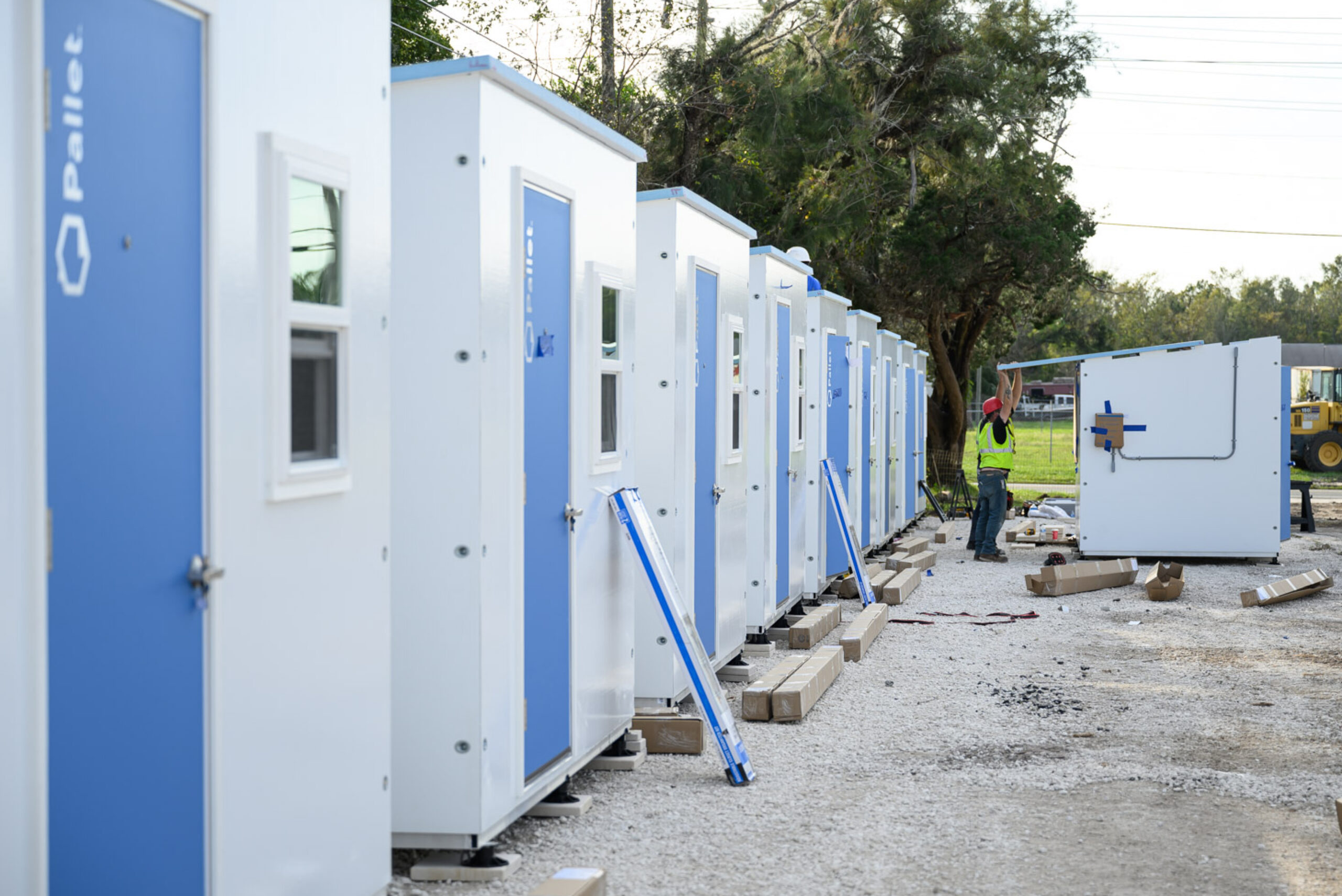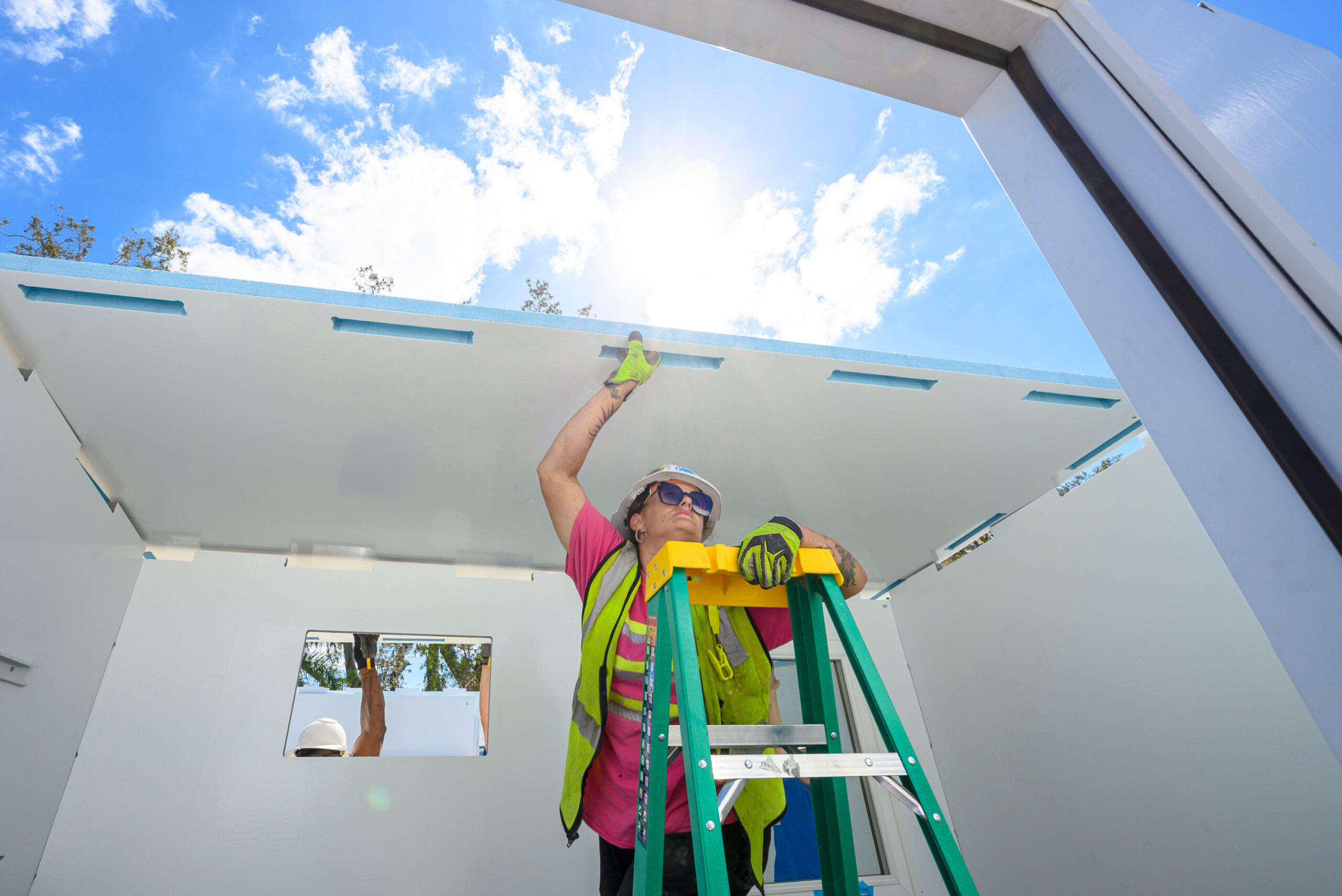Homelessness Glossary Part III: The Housing Continuum
August 22, 2023
Providing a broad, inclusive range of equitable shelter and housing solutions is the key to building resilient communities.

To create true equity in cities and towns, a full range of shelter and housing types is needed to support the unique needs of each individual. This is where the housing continuum comes in, highlighting the benefit of communities that come together to provide dignified solutions for every resident.
Providing a broad, inclusive range of equitable shelter and housing solutions is the key to building resilient communities.
To help better understand the language surrounding the housing continuum, we’ve compiled a brief list of terms defined by government agencies, organizations, experts, and advocates in the homelessness field.
- Housing Continuum
A full range of shelter and housing types that fit the diverse needs of different socioeconomic groups comprising any given community. From temporary options to permanent market rate housing, there are many different models necessary to support every resident of a city or town.
Although the housing continuum might appear to be a timeline, there is no standard or predetermined path from one housing type to the next: each unique route a person takes is dependent on factors like social determinants of health (SDOH), income, and reliable access to an ecosystem of support.
- Unmanaged/Self-governed sites
This section of the housing continuum includes temporary shelter models like encampments and self- and co-governed sites.
Encampments are typically congregations of people experiencing homelessness (PEH) composed of tents, improvised structures, and cars that are subject to city-mandated sweeps. Self- and co-governed sites are usually overseen by residents who may take on responsibilities such as cleaning, maintenance, and security.
Both models have little to no access to case management or government funding.
- Safe Sleeping/Parking sites
The safe sleeping model comprises sanctioned or legal sites where PEH are allowed to stay for a set period of time, usually in tents, temporary structures, or cars. In some cases, limited resources and support are provided for residents.
- Congregate shelter
A common type of temporary shelter designed to assist large populations of PEH under one roof where people are granted a bed only on a nightly, first come first served basis and are required to leave each morning. Residents have little to no privacy and are often divided by characteristics like gender or age; they are usually connected with supportive services but are subject to comply with stringent codes of conduct for entry and are faced with a number of barriers such as the inability to bring pets or personal possessions.
- Non-congregate emergency/Interim shelter
A rapidly built, cost-effectively scaled shelter type that provides PEH with the privacy of individual shelter in a community setting, meant to help people transition to more permanent housing solutions. This model’s low barriers allow residents to bring pets and possessions while still requiring codes of conduct to ensure safety. Onsite case management and supportive services are provided to meet the unique needs of each resident. This stage in the housing continuum is where Pallet fits in and is underrepresented in many communities.
- Transitional housing
A semi-permanent model that provides residents with private facilities and a longer length of stay, contingent on codes of conduct such as employment or sobriety requirements. This housing type takes longer to construct at a higher price point and is in many cases not intended to transition residents to permanent housing.
- Permanent supportive housing
Service-based programs designed to meet the needs of people living with disabilities or chronic medical conditions. This model is often structured around long-term leasing, rental assistance, and supportive services put in place to support vulnerable community members.
- Low-income/Affordable housing
A model broadly defined as housing in which the occupant pays no more than 30% of their gross income, including utilities. Subsidized to help low-income residents, this stage in the continuum often has high barriers due to eligibility requirements, long waitlists, and a lack of supply. Supportive services are typically omitted in low-income and affordable housing.
- Market-rate/Luxury housing
Prices of market-rate housing are defined by current real estate market evaluation and are the direct result of government policies and planning practices. Luxury housing is typically valued at the top 10% of properties on the local market, featuring prime locations, expensive materials, high-end amenities, and large square footage and lot size.
Both models present high barriers due to lack of affordability and are not connected to supportive services.
To create truly resilient communities, it is necessary to provide every shelter and housing type defined above. To learn more about the housing continuum and its importance in cultivating equitable and inclusive opportunities for every resident of your city or town, download our Housing Continuum Infographic.


